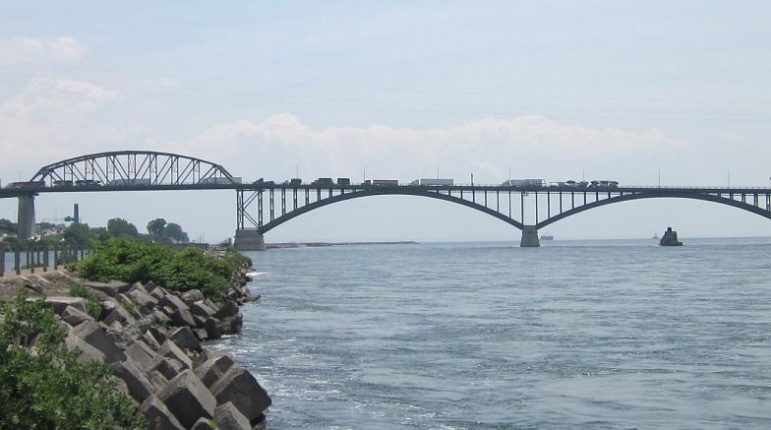
The Peace Bridge connects Buffalo, New York to Fort Erie, Ontario in Canada. Image: WBFO
By Elizabeth Miller
This story was originally published on Great Lakes Today and is republished here with permission.
A leaked list of infrastructure priorities for the Trump administration includes bridges and other big projects for the Great Lakes region.
It’s unclear whether the list is a draft or final version. But it’s sparking excitement about rebuilding the region.
The cost of the 50 projects is more than $130 billion, with half coming from private investment.
Among the projects are new bridges connecting Detroit and Buffalo to Canada, as well as new sewer tunnels for Cleveland’s Project Clean Lake.
Another project is a modernization of Michigan’s Soo Locks, which connect Lake Superior to the rest of the Great Lakes. Though the project’s been authorized to move forward since 1986, it stalled.
“What’s changed in the meantime has been a very different political climate to get things done, said David Naftzger, executive director of the Conference of Great Lakes and St. Lawrence Governors and Premiers. He’s hopeful that the project might actually happen. “We’re really seeing a very different conversation with political leaders committed to addressing this longtime need.”
Naftger says recognition of the locks stresses the importance of maritime transportation in the region.
But the Alliance for the Great Lakes’ Joel Brammier says there’s more to worry about.
“This administration needs to make sure that as we make big decisions about investments in the Great Lakes region, those investments are locking in the benefits of fresh water for millions of people for generations to come,” he said. “There’s an opportunity here to do that right, and there’s an opportunity to be shortsighted and make decision that aren’t going to work for the majority of people who live here.”
Naftzger and Brammier agree that these projects are just the beginning for the Great Lakes region.
“Maritime transport is critical,” Naftzger said, “but it’s a piece of a bigger puzzle that includes roads, highways, train travel, and a variety of other modes.